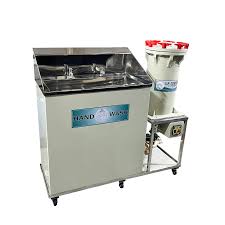In an era where every bit of precious metal counts, investing in a high-performance gold recovery machine is not just smart—it’s essential. Whether you’re running a mining operation, processing e-waste, or refining jewellery scrap, the right machine can boost your yield, reduce waste and drive profitability.
What is a Gold Recovery Machine?
A gold recovery machine is specialised equipment designed to separate gold particles—from coarse nuggets down to fine dust—from other materials. These machines use physics (gravity separation, centrifugation) or chemical processes (leaching, refining) to recover gold that would otherwise be lost in tailings or scrap. For example, gravity-based methods remain foundational: heavy gold particles sink while lighter gangue material is washed away.
Why You Need One
- Maximise Yield: Many operations lose significant value when gold particles remain un-recovered. Fine gold particles (often < 0.1 mm) are particularly prone to loss. Innovative technology can raise recovery rates by 10–20% or more.
- Reduce Waste & Cost: By recovering gold efficiently, you reduce the volume of tailings or scrap that require disposal or further processing. This can also lower reagent and energy costs.
- Improve Environmental Footprint: Modern machines and processes allow you to operate more sustainably—especially important in jurisdictions with strict environmental regulations.
- Flexibility Across Materials: Whether you’re processing mined ore, e-waste (printed circuit boards, connectors) or jewellery scrap, the correct machine can be adapted to your input material and scale.
How It Works – Key Technologies
Gravity Separation
Many gold recovery machines utilise gravity separation methods. This includes shaking tables, jigs, and centrifuges that exploit density differences between gold and surrounding material. For instance, a machine may take a slurry feed, direct it into a “concentrator” bowl where heavy gold particles settle into grooves or traps under rotation.
Centrifugal Concentrators
Ideal for fine gold recovery, these devices spin at high speeds to create a high-“g” force environment, forcing heavier particles (gold) outward and lighter material inward. This improves capture of fine gold.
Chemical & Refining Machines
In cases of e-waste, jewellery scrap or low-grade ores, chemical machines dissolve or extract gold via leaching, refining or electro-recovery. These machines often follow after the physical separation stage.
Choosing the Right Machine: What to Consider
- Feed Material Characteristics
– What type of gold bearing material are you processing? Coarse nuggets, mixed ore, dust/scrap, e-waste?
– What size distribution and grade is your feed? The recovery machine must match your material type. - Capacity & Throughput
– How much material do you need to process per hour or day? Choose a machine whose capacity aligns with your production targets.
– Consider future expansion—scalable equipment helps. - Recovery Efficiency & Technology
– What recovery rate does the machine claim? If you’re dealing with fine gold particles, make sure the machine is designed for that challenge.
– Consider what separation method (gravity, centrifuge, chemical) is used and whether it suits your feed. - Operating & Maintenance Cost
– Machines with lower energy consumption and easy maintenance offer better long-term returns.
– Check availability of spare parts and supplier support. - Environmental & Safety Considerations
– For chemical-type recovery machines, ensure compliance with local regulations on hazardous chemicals, emissions, tailings.
– Review waste disposal, acid handling, operator safety. - Supplier & After-sales Support
– Choose a reputable supplier with service capability, training and parts availability.
– Ask for references or case-studies of similar installations.
Top Applications of Gold Recovery Machines
- Mining & Ore Processing: Used in mills to recover gold from ore via gravity circuits or integrated with flotation/leaching.
- E-Waste & Scrap Recycling: Electronic boards, gold-plated contacts, connectors contain gold. Specialized machines help recover this valuable metal.
- Jewellery & Refining Workshops: Small-to-medium scale setups recover gold dust from polishing, buffing, filings. Machines are designed for compact size and workshop conditions.
Best Practices for Operation
- Pre-test your feed material: Conduct ore or scrap analysis to determine particle size, gold grade, gangue composition. This allows you to set the machine parameters optimally.
- Ensure optimal separation zone: For gravity machines, flow rate, tilt, riffle profile, and rotation must be tuned for your material.
- Minimize gold loss: Regularly sample tailings or waste streams to monitor gold not recovered. Adjust machine settings accordingly.
- Maintain equipment: Keep liners, feed systems, and concentrating zones in good condition; wear will reduce efficiency.
- Track cost-vs-recovery: Monitor energy, consumables, labour, maintenance cost against recovered gold value to measure machine ROI.
- Stay compliant: Especially for chemical machines, monitor environmental aspects—discharge, fumes, safe handling of reagents.
Conclusion
In today’s competitive environment, deploying the right gold recovery machine can be a game-changer. With careful selection based on feed material, capacity, technology and economics—and by following operational best practices—you can maximise gold yield, reduce waste, lower costs and improve sustainability. Whether you are in mining, e-waste recycling or jewellery refining, this investment offers real value.
